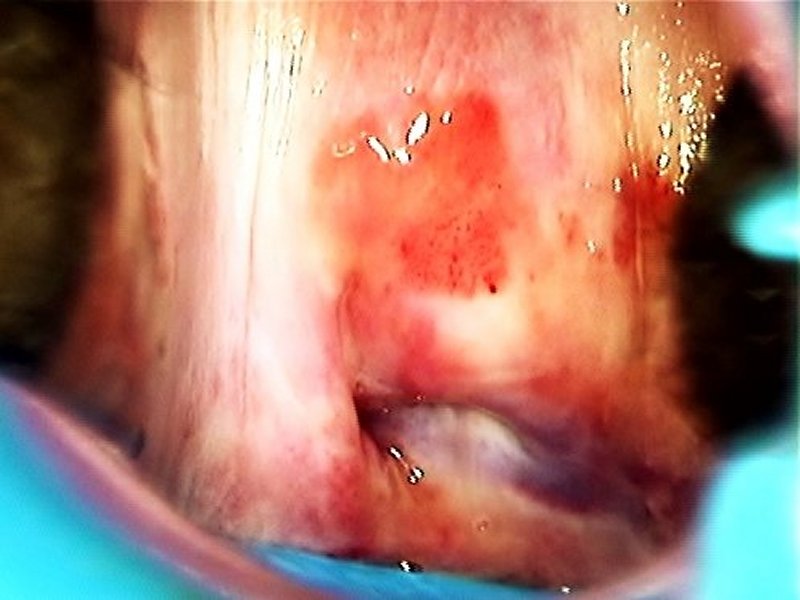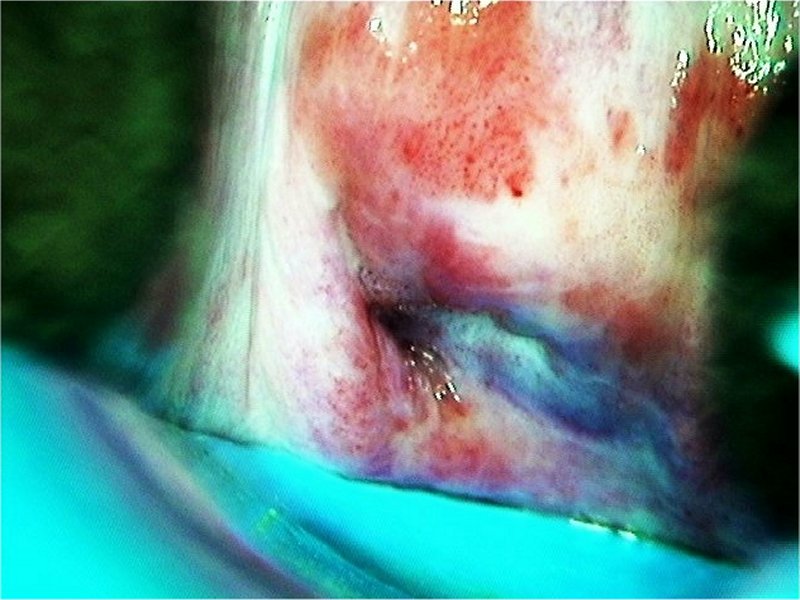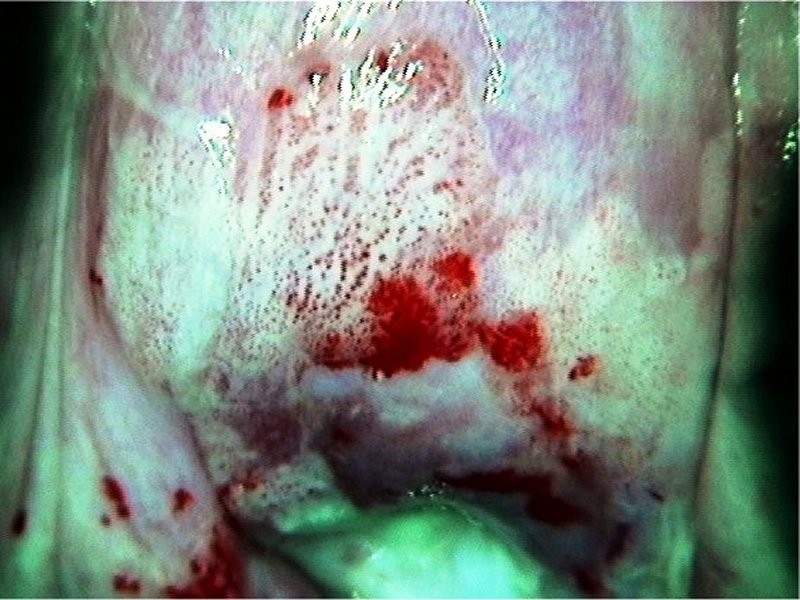Atlas of Colposcopy: Principles and Practice / Activity 6
Case |
Early and advanced cancers / Squamous cell cancer
Go back to the list
| After normal saline |
| After normal saline |
| After acetic acid |
| After acetic acid |
| After acetic acid with green filter |
| After Lugolís iodine |
 General assessment General assessment | |||||||||||||||||
 Normal colposcopic findings Normal colposcopic findings | |||||||||||||||||
 Abnormal colposcopic findings Abnormal colposcopic findings | |||||||||||||||||
 General principles General principles | |||||||||||||||||
 Position and size Position and size | |||||||||||||||||
 Grade 1 (minor) Grade 1 (minor)
|  Grade 2 (major) Grade 2 (major)
|  Non-specific Non-specific
|  Suspicious for invasion Suspicious for invasion
|  Miscellaneous finding Miscellaneous finding
| |
Swede score:
| Nil or transparent | Thin, milky | Distinct, stearin | |
| Nil or diffuse | Sharp but irregular, jagged, satellites | Sharp and even, difference in level | |
| Fine, regular | Absent | Coarse or atypical vessels | |
| < 5 mm | 5-15 mm or 2 quadrants | >15 mm, 3-4 quadrants, or endocervically undefined | |
| Brown | Faintly or patchy yellow | Distinctly yellow |
Case Summary
| Provisional diagnosis: | Type 3 transformation zone; high-grade squamous intraepithelial lesion (HSIL). |
| Management: | LLETZ (type 3 excision). |
| Histopathology: | Invasive squamous cell carcinoma. |
| Comment: | Extension of lesion to the vagina often indicates the presence of invasive disease. Diagnostic excision was performed, which revealed invasive disease. The patient was finally treated with radical hysterectomy with pelvic lymphadenectomy. |





